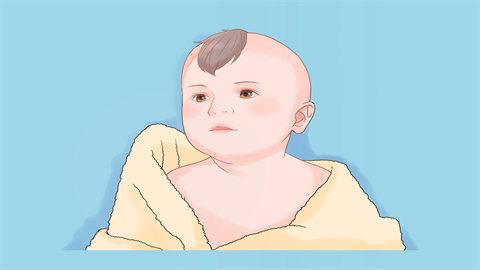Why is the area around my baby's mouth turning blue, and what should I do?
Under normal circumstances, bluish discoloration around a baby's mouth may be caused by low environmental temperature, excessive crying, neonatal pneumonia, congenital heart disease, anemia, or other reasons. Parents can choose appropriate methods such as daily care, medication, or surgical treatment based on the specific situation to improve the condition. Detailed analysis is as follows:

1. Low Environmental Temperature
When the environment is cold, peripheral blood vessels in babies constrict, slowing circulation and reducing blood supply around the mouth, resulting in a bluish appearance. Promptly move the baby to a warm environment, wrap them in a blanket for warmth, and pay special attention to keeping the face and areas around the mouth and nose warm.
2. Excessive Crying
Prolonged intense crying can cause rapid breathing and temporary oxygen deficiency, leading to bluish skin and mucous membranes around the mouth. Calm the baby promptly, gently pat their back to soothe the crying, help them breathe steadily, and observe whether the bluish discoloration improves.
3. Neonatal Pneumonia
Lung infection causes inflammation that impairs gas exchange, leading to systemic hypoxia and bluish discoloration around the mouth, often accompanied by coughing and rapid breathing. Under medical guidance, medications such as cefotaxime sodium for injection, penicillin sodium for injection, or Xiao'er Feire Kechuan oral liquid may be used. Keep indoor air well-ventilated and moderately increase humidity.
4. Congenital Heart Disease
Abnormal heart structure leads to abnormal blood flow, allowing low-oxygen blood to reach the area around the mouth, causing bluish discoloration, often accompanied by slow growth and weak feeding. Under medical supervision, medications such as digoxin oral solution, hydrochlorothiazide tablets, or spironolactone tablets may be prescribed. In severe cases, surgical interventions such as patent ductus arteriosus ligation or ventricular septal defect repair may be required.
5. Anemia
Insufficient hemoglobin levels in the baby reduce the blood’s oxygen-carrying capacity, causing pale or bluish skin and mucous membranes around the mouth, along with pallor and poor mental state. Under medical guidance, treatments may include ferrous sulfate syrup for children, ferrous fumarate granules, or vitamin B12 oral solution. Introduce complementary foods appropriately and ensure balanced nutrition.
In daily care, closely monitor the baby's body temperature and adjust clothing accordingly; avoid prolonged intense crying to minimize episodes of oxygen deficiency; schedule regular health check-ups to monitor growth and development; and provide scientific feeding to ensure adequate nutrition and reduce the risk of illness.






